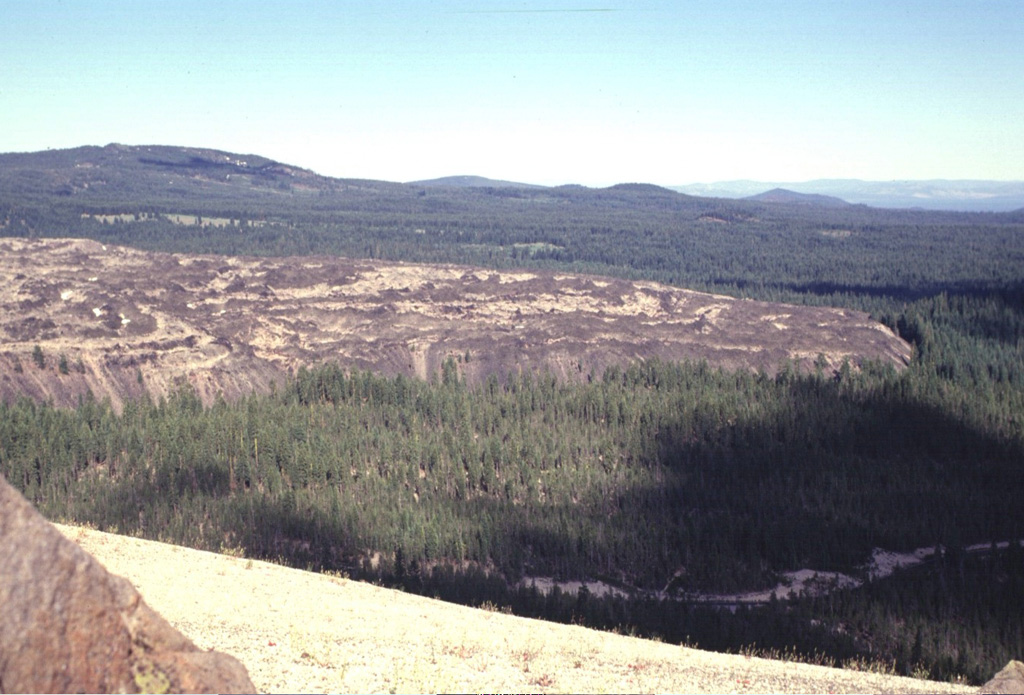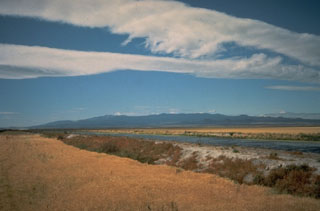Image GVP-06598

The steep-sided SW margin of the Little Glass Mountain obsidian flow rises above the surrounding forested flanks of Medicine Lake volcano. Eruption of the rhyolitic lava flow was preceded by a pumice eruption that mantled the surrounding area (including the basaltic cone of Pumice Stone Mountain in the foreground) with white pumice. The 0.4 km3 Little Glass Mountain lava flow is the second largest silicic lava flow at Medicine Lake.
Photo by Lee Siebert, 1998 (Smithsonian Institution).
![]() This image is made available under the Public Domain Dedication CC0 license, but proper attribution is appreciated.
This image is made available under the Public Domain Dedication CC0 license, but proper attribution is appreciated.
Keywords: lava flow | obsidian | caldera

Medicine Lake
